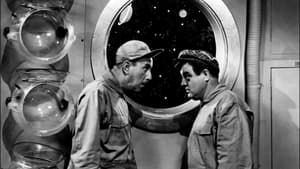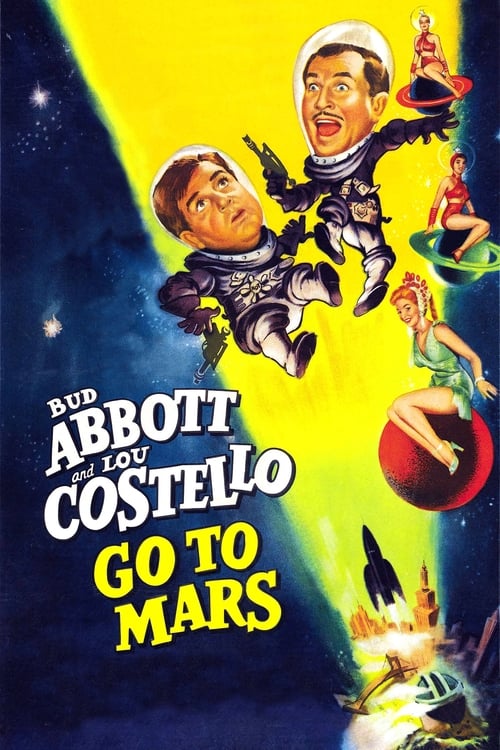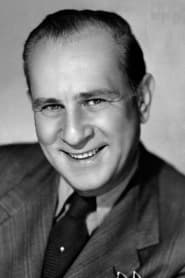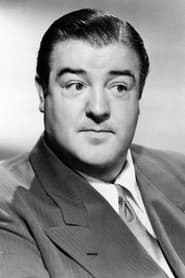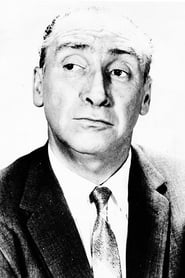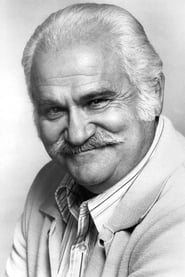Cast
View AllBud Abbott
as Lester
Lou Costello
as Orville
Mari Blanchard
as Allura
Robert Paige
as Dr. Wilson
Horace McMahon
as Mugsy
Martha Hyer
as Janie Howe
Jack Kruschen
as Harry
Joe Kirk
as Dr. Orvilla
Jean Willes
as Capt. Olivia
Anita Ekberg
as Venusian Guard
James Flavin
as First Policeman in Bank
Jackie Loughery
as Venusian Guard
Ruth Hampton
as Handmaiden (as Ruth June Hampton) (as Miss New Jersey)
Valerie Jackson
as Handmaiden (as Miss Montana)
Renate Hoy
as Handmaiden (as Renate Huy) (as Miss Germany)
Crew
Director
- Charles Lamont
Producer
- Howard Christie
Reviews
John Chard
Better than its reputation suggests.
Abbott and Costello Go To Mars sees the popular duo tackle a sci-fi theme that was to be so prevalent in the 50s. It's directed by Charles Lamont and the co-star line up features Robert Paige, Horace McMahon, Mari Blanchard, Martha Hyer & Jack Kruschen. The plot sees Bud & Lou as Lester and Orville respectively, who accidentally find themselves on a rocket-ship bound for Mars. However, they actually land in New Orleans during the Mardi Gras and confusion reigns. Then an encounter with a couple of escaped convicts leads to another blast off, to Venus. A planet populated by a bevy of beauties.
They were three years away from making what would be their last film together, but history dictates that the best of the film outings for Bud & Lou were long since past. However, "Go To Mars" and "Meet Dr. Jekyll and Mr. Hyde" (also 1953) are worthy pieces showcasing the comic talent and irrepressible charm of two fine entertainers. Sure the plot is as thin as some of the sets are for "Go To Mars," but there's enough chaos and comedy schtick to keep the smile on ones face. We get Costello doing an Italian accent -badly, which in turn leads to a slapathon. Then there's stunts with magnetic moon-boots, a triple bed fall down, gravitational larks and Mardi Gras strangeness. There's even a cheeky aside in favour of the ladies (the Venusian female race being contestants of Miss Universe) as the new male arrivals on Venus are compared to beefcake Adonis types on Venusian TV.
Far from their best work but certainly enough good here to shoot down those "worst of the series" tags. 6/10
Mar 4, 2020
Thematic Analysis
As a science fiction narrative, Abbott and Costello Go to Mars explores potential technological and societal futures, raising important questions about humanity's place in the universe and our evolutionary trajectory. The film stands apart from other sci-fi works by presenting a vision that is both thought-provoking and visually distinctive.
Director Charles Lamont brings their distinctive visual style to this film, continuing their exploration of themes seen in their previous works while adding new elements. Their approach to pacing and visual storytelling creates a viewing experience that rewards close attention.
Released in 1953, the film exists within a cultural context that now offers viewers historical perspective on the social issues of that era. Its reception demonstrates the diverse reactions to its artistic choices and its place in cinema history.
Did You Know?
- The production of Abbott and Costello Go to Mars took approximately 9 months from pre-production to final cut.
- With a budget of $0.8 million, the film proved to be a financial success, earning back its investment and more.
- The final cut of the film runs for 77 minutes, though the director's initial assembly was reportedly 125 minutes long.
- The film contains approximately 1249 individual shots.
- The director insisted on using practical effects whenever possible, reserving CGI for only the most necessary scenes.
- Some visual effects sequences took up to 10 months to complete.
Historical Context
- In 1953, when this film was released:
- The Cold War was intensifying, influencing global politics and culture.
- The civil rights movement was gaining momentum in the United States.
- The film industry was dominated by major studios, with independent cinema still in its early development.
How This Film Stands Out
While Abbott and Costello Go to Mars shares thematic elements with other films in its genre, it distinguishes itself through its unique approach to storytelling, visual style, and character development.
Unlike The Apartment, which takes a more conventional approach to its subject matter, Abbott and Costello Go to Mars offers a fresh perspective through its innovative visual language and narrative structure.
While films like A Trip to the Moon and The Rules of the Game explore similar territory, Abbott and Costello Go to Mars stands apart through its deeper exploration of its central themes and more complex characterization.
This film's unique contribution to cinema lies in its thoughtful balance of entertainment value and thematic depth, making it a valuable addition to its genre.
Details
- Release Date: April 6, 1953
- Runtime: 1h 17m
- Budget: $762,446
- Revenue: $1,250,000
